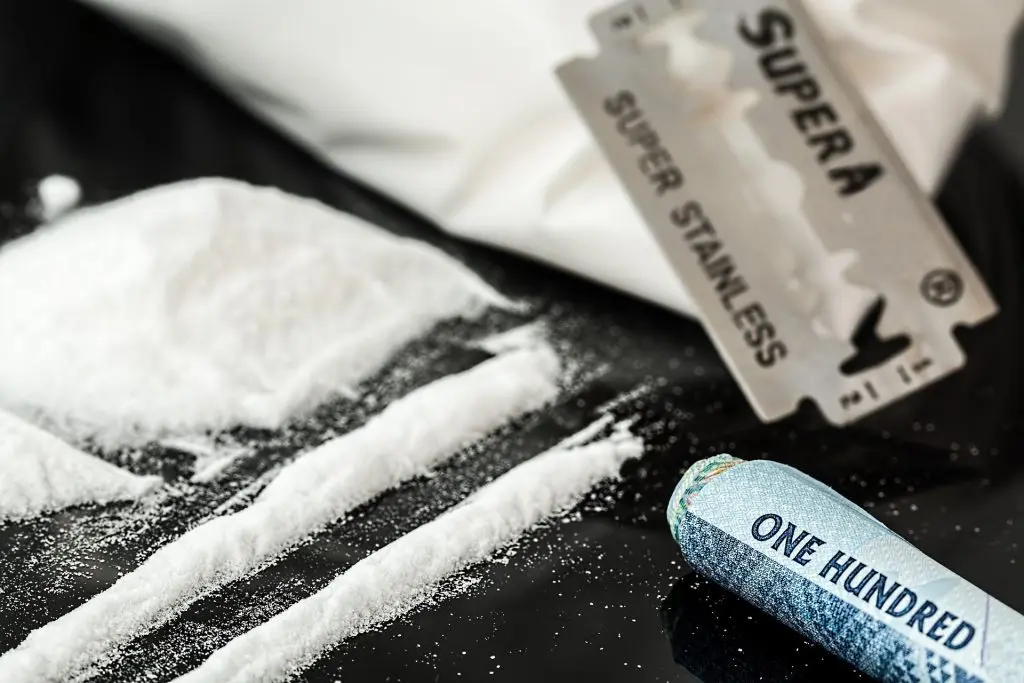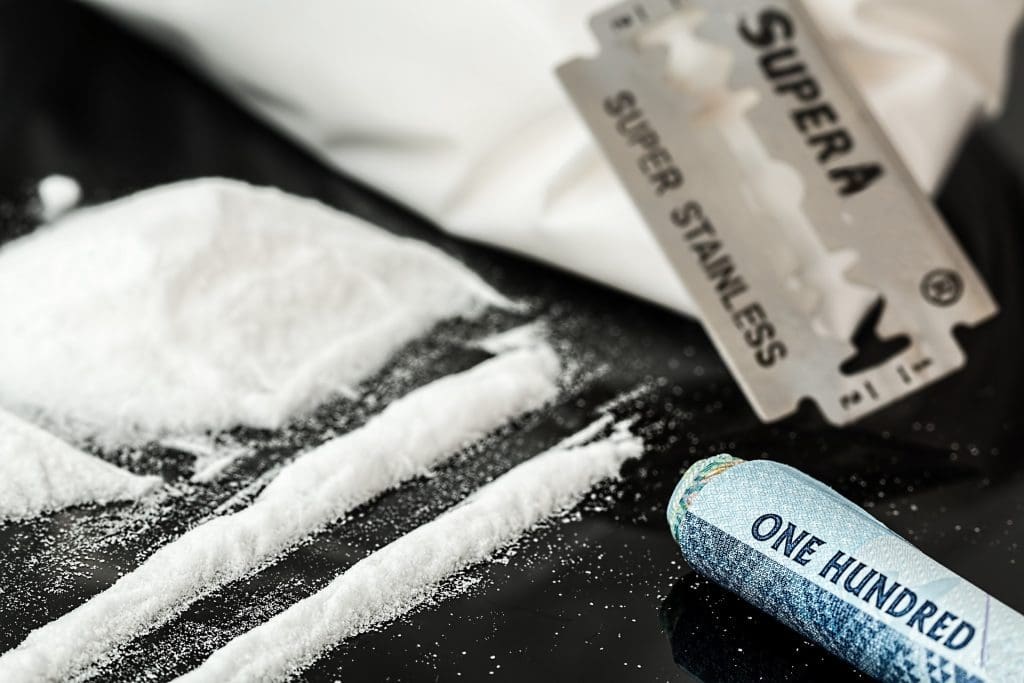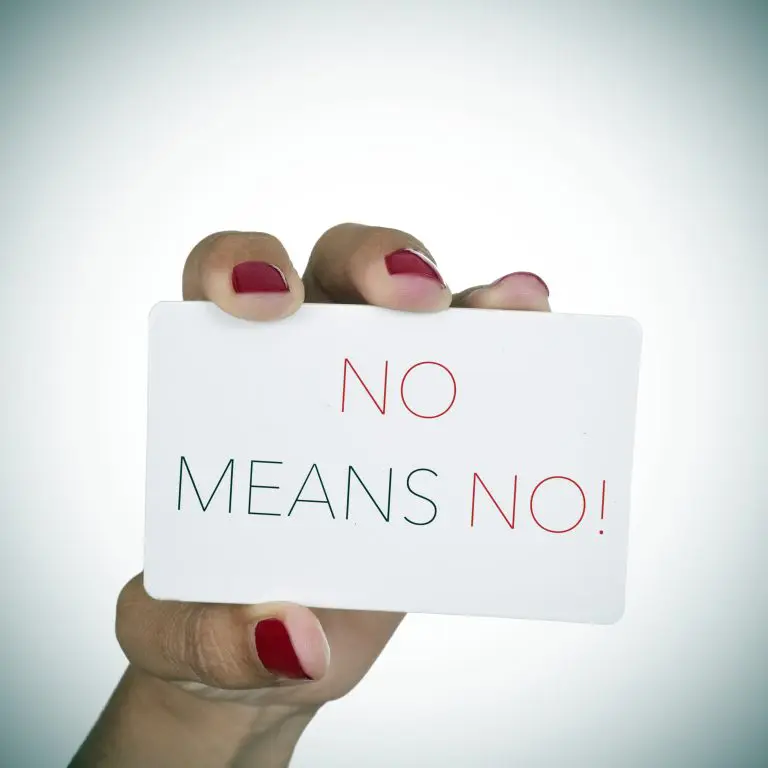By Chris Finnie – former Contributing Author to Crime, Justice and America magazine. Originally published in 2002 and reposted with permission from Crime, Justice and America magazine
Long before “substance abuse” became part of our vocabulary, drugs were considered a source of crime. In 1869, the Victorian James Greenwood referred to alcohol abuse, or drunkenness, as “the crowning curse” that “has wrought more mischief than all other social evils put together.” London’s opium dens and gin mills were already notorious as breeding grounds for violent crime up to and including murder.
The problem wasn’t confined to Europe; as early as 1872, American doctors were compiling statistics and worrying about the abuse of opium in this country, and associating it with a “vicious” mode of life: criminal, in other words. A miracle cough medicine, first discovered in 1874 and popularized in the 1890s by the Bayer Company (the same company that first promoted aspirin), was hailed as a “hero” and the perfect cure for morphine addiction. Today we know that cure as heroin. Victories in the War on Drugs have never come easily.

-
Attorneys.Media
-
@attorneys_media
-
linkedin
-
Digg
-
Newsvine
-
StumbleUpon
A Growing Problem
These days, in addition to the Victorian standbys of alcohol and opium, and organic intoxicants such as marijuana and mescaline, America is deluged with dozens of man-made drugs: methamphetamines, ecstasy, LSD, crack, angel dust, and more. The list goes on, familiar to anyone who glances at the news, and growing longer each year.
The growing list of illicit substances corresponds to a growing number of law-breakers. According to a study conducted by the Justice Policy Institute, between 1980 and 1997, the number of people nationwide imprisoned for violent crimes doubled, the number for non-violent crimes tripled, but the number imprisoned for drug offences increased eleven-fold.


-
Attorneys.Media
-
@attorneys_media
-
linkedin
-
Digg
-
Newsvine
-
StumbleUpon
While the federal government defines which drugs are legal, each state handles the problem differently. This makes it harder to judge the actual impact drug use has on crime rates. But according to Justice Department statistics, 22 percent of all federal prison inmates, and 33 percent of all state prison inmates, admitted being under the influence of drugs at the time of their offense. In California, according to Russ Heimerich of the Department of Corrections, “85 percent of California’s 157,000 inmates had some sort of substance abuse issue when they committed their crimes.” This figure doesn’t necessarily contradict the national ones, since alcohol abuse is still as big a problem as it was in Greenwood’s nineteenth-century London.
With new drugs has come a new attitude. Dependency, whether to legal drugs such as tobacco and alcohol or to the heavy hitters of Schedule I, is now agreed to be a medical problem. Yet while those in law enforcement agree that addiction is disease, drug use continues to have close associations with crime.
Even those in the front lines of the battle find it hard to draw the line. To quote Lieutenant James Whitten, of the Los Angeles County Sheriff’s Department, Narcotics Bureau, “Does correlation equal causation? Does drug use encourage crime or does criminality itself encourage drug use? Or do other factors encourage drug use? All three are probably true to some extent.”
Which Came First?
One correlation between the crime rate and drug use is easy to spot. Today, an estimated 14.8 million Americans are currently using illegal drugs, according to the U.S. Department of Health and Human Services, and almost one in five young adults between the ages of 18 and 20 has used an illicit substance within the past month. By definition, then, 20 percent of this age group are law-breakers. Those who manufacture, distribute, and sell these drugs also contribute directly to the crime rate.


-
Attorneys.Media
-
@attorneys_media
-
linkedin
-
Digg
-
Newsvine
-
StumbleUpon
While drug use patterns are consistent across the United States, beginning in the mid-eighties California sentencing statutes gave the state the dubious distinction of leading the country in drug offender incarcerations, at a rate two and a half times the national average. In 1996, the rate nationwide was 45 per 100,000 people. In California, it was 132 per 100,000. The arrest rate, naturally, was even higher: California Department of Justice figures for the year 2000 show an adult arrest rate of 1,030.8 per 100,000 people, with a juvenile rate of 587.2. As of December 31, 2001, the California Department of Corrections held 38,271 people for drug crimes — 24.4 percent of the state’s total inmate population.
Drug offences themselves represent only a portion of the impact drug use has on the crime rate. Nathan Barankin, Communications Director for California Attorney General Bill Lockyer, says, “Unfortunately, all too often you find that people who engage in crime, and it doesn’t matter if it’s violent crime or property crimes, often have an association with illicit drug use. For some it’s a matter of committing crimes to support a habit, in other cases it’s a matter of protecting turf between drug dealers, and for others it’s the enabler that allows them to commit an offence.”
Not all abused substances are illegal, of course, but supporting any sort of habit can get expensive. Among those imprisoned for burglary or robbery, almost a third said they committed their crimes in order to support a drug habit. Burglaries, muggings, armed robbery and purse snatching: all are ways of raising money to feed a habit. So is prostitution, the so-called oldest profession and one common way for women to find that all-important next fix.
Prostitution and property crimes support habits. Mr. Barankin’s next category of drug-caused crime spills into newspaper headlines with drive-by shootings and the like, as dealers and gangs fight over turf. Drugs are a multi-billion dollar business, just as bootleg alcohol was during Prohibition.
Turf Wars
Referring to organized crime in the Twenties, Economics Professor Mark Thornton of Auburn University has said, “In the process of providing goods and services, those criminal organizations resort to real crimes in defense of sales territories, brand names, and labor contracts.” Similar situations occur today. One member of the Mexican Mafia, La Eme, testified at his trial that they tax street gangs for the rights to sales territories, and boasted that he had authorized some forty executions.


-
Attorneys.Media
-
@attorneys_media
-
linkedin
-
Digg
-
Newsvine
-
StumbleUpon
Such intramural crimes spill over into the non-gang population when the victim of a drive-by is an innocent bystander, or when police officers are targeted. Along the Mexican border, such crimes often have an international flavor. The assassination of Tijuana Police Chief Alfredo de la Torre has been linked to drug trafficking gangs.
Innocent Victims
Hardest to quantify, yet perhaps the most frightening to the public at large, are those crimes which fall into Mr. Barankin’s final category: crimes which are “enabled” by drug use. As the Victorians realized, many drugs take the brakes off human passions. According to US Department of Justice figures based on victims’ reports, 37 percent of all rapes and sexual assaults, 27 percent of aggravated assaults, and 25 percent of simple assaults involve alcohol, the legal drug. In approximately half of all homicides and cases of domestic violence, the victim, the offender, or both are intoxicated. In addition to these deliberate, if impulse crimes, 38 percent of all traffic fatalities, and up to 40 percent of the deaths in industrial accidents, are alcohol-related.
In addition to the well-known problems of drinking, a number of newer drugs increase aggression. Barbara Smith of the National Council on Alcoholism & Drug Dependence said during a phone interview, “If they’re going with meth and speed, they wake up and they’re cranky, and they’re more likely to commit violent crimes because they’re, well, crazy. They crash for two or three days, wake up starving and irritable, and vent on anyone who gets in their way.” Angel dust, or PCP, is notorious for inducing violence and paranoia.
Repeat Offenders
Drugs affect the American crime rate in yet another way: through the return-to-prison and recidivism rates. These are two separate ways of counting the number of repeat offenders. Russ Heimerich offers a simple analogy to explain the distinction between the two: a city of half a million may claim an annual bus ridership of three million, by counting each individual trip as a ride. The return-to-prison rate is the number of bus rides, while the number of individuals who actually use the bus during the given year is equivalent to recidivists.
At least that’s the way these terms are used in California. Again, it’s difficult to compare these numbers between states, since each computes them in their own way. But allowing for these different yardsticks, half of all those released from prison nationwide will re-offend within two years.
In 1999, the total number of prisoners released to parole by the state of California was 59,322. Within a year, over 43%, 25,651 individuals were back inside and by the end of 2001, 33,262, or approximately 56 percent, had become recidivists. This high rate for repeat offenders explains why over 36 percent of those currently in state prison have either violated their parole or been sentenced for new crimes while on parole. 48 percent of all parole violators were returned to prison for drug possession.


-
Attorneys.Media
-
@attorneys_media
-
linkedin
-
Digg
-
Newsvine
-
StumbleUpon
Addiction by its nature is a repeating offence, and the statistics bear this out: among those convicted for simple possession, the number who violate their parole or are convicted for an additional offense runs closer to 60 percent than the state average of 56 percent. The rate is somewhat lower for those charged with manufacturing or sale of drugs,
since the worst offenders in these categories don’t get out as readily. But addiction presents an opportunity to lower this rate, and thereby the crime rate: medical treatment.
A Possible Solution
Everyone seems to agree that this approach can make a difference. Speaking as a representative of Attorney General Lockyer’s office, Nathan Barankin said, “There’s plenty of anecdotal and empirical evidence to support the theory that drug treatment can reduce drug abuse.” Betty Battenburg of the National Council on Alcoholism & Drug Dependence told Crime, Justice & America that “We can fight crime by incarceration, but fighting crime by providing treatment saves lives and reunites families, and is far less costly.”
Even those on the streets accept the need for treatment. In a letter, Lieutenant Whitten of the Los Angeles County Sheriff’s Narcotics Division said, “Should enforcement be the only effort to reduce drug use? Absolutely not. It is not a question of treatment vs. incarceration. It is more a question of prevention (through education), incarceration (through enforcement) AND treatment (through social services) to reduce the problem, but not eliminate it.”
Treatment for addicts may not reduce the number of turf wars or dealers, except by reducing demand, but it can reduce the number of other drug-related crimes. Deborah Vargas, of the Center on Juvenile and Criminal Justice, says, “Resources have been diverted to incarceration and not into treatment, which studies show works to divert the drug offender from committing crimes to support their habit.” It also affects the number of law-breakers subject to the three-strike rule. (Over a quarter of California inmates are imprisoned for their second or third strike, a number that can only rise.)
Ms. Vargas continues, saying, “By the time they reach prison, the majority have a rap sheet that is pretty impressive. Critics will say, ‘they belong in prison; look at their crime.’ But the crimes committed were to secure drugs. If you treat the addiction you take away the crime.” She goes on to state that treatment is not a sure cure in all cases. As with the evils of poverty and prejudice, there aren’t any panaceas for the problems of substance abuse.
Endorsed By Voters
This general agreement on the value of treatment is behind new laws in several states. In 1996, Arizona voters passed Proposition 200, establishing that state’s Drug Treatment & Education Fund and mandating probation and treatment for non-violent offenders. Despite a challenge from the state legislature, treatment is now the law there. The state’s Supreme Court estimated that taxpayers saved $2.5 million dollars in the program’s first fiscal year of operation since treatment and probation cost about $16 a day, whereas prison costs at least $50 a day. New York is also seeking to overturn its draconian laws on possession, in place since the days of Governor Nelson Rockefeller.


-
Attorneys.Media
-
@attorneys_media
-
linkedin
-
Digg
-
Newsvine
-
StumbleUpon
California’s Proposition 36 was voted into law in November of 2000. This new law requires nonviolent offenders and parole violators convicted of possession to be sentenced to probation and a drug treatment program rather than incarceration. Those convicted of drug sales, using firearms in their crime, or convicted for simultaneous non-drug-related crimes are excluded from the more lenient sentencing requirements. Third-strike offenders are excluded unless they have a clean record for the previous five years. The Legislative Analyst’s Office estimates that up to 36,000 drug offenders a year could be diverted into treatment programs.
Voters clearly thought it was a good idea; despite opposition from former Governor Pete Wilson, the District Attorneys’ Association, and the California Peace Officers’ Association, the measure passed by a 61 percent margin. Opponents said that the measure limits judicial discretion and would effectively decriminalize all drug use. But the voters chose to agree instead with the proponents, who included the California Society of Addiction Medicine and the Nurses’ Association.
Despite passage, many within the law enforcement community continue to regard Proposition 36 as a mistake. Lieutenant Whitten feels that the public was “duped” into voting for the measure in the belief that most drug users go to prison for first-time possession offences. While Department of Correction figures would seem to support this (10 percent of the prison population is in for “criminal substance possession”), he points out that, in many cases, these convictions are the result of plea bargains for more serious crimes, such as possession-with-intent —which is basically selling drugs. He states, “It is not true, in my experience at least in the Los Angeles area, that first-time drug users and simple possessors usually receive jail or prison sentences.”
But there is no way of knowing how many of those plea bargains involve minor dealers, those who sell a little to support their own habit. Such minor dealers are as much victims of addiction as those arrested for simple possession. It’s unlikely that major kingpins of the drug industry would be able to cop a plea for such a minor offence.
Implementing the law won’t be easy, despite the $180 million budgeted by Prop 36 for start-up costs and the $120 million to fund new treatment options. Discussing the new law, Mr. Barankin said, “The law is presenting a lot of challenges for law enforcement and health providers alike. The first problem is that the net is cast is so wide that there are lots of hardcore drug users the system isn’t prepared to treat effectively yet. The other is that there are so many who qualify for treatment under Proposition 36 that it’s very difficult to find enough space for them all, and enough personnel to monitor progress.”
The Wages Of Sin
But the Legislative Analyst’s Office estimates that the $120 million needed from the state’s general fund for the Substance Abuse Treatment Trust Fund would be offset by annual savings of $200-$250 million in the state prison system. It could also save up to $500 million in one-time expenditures for new prison construction. 9,500 fewer parolees a year reduces the case load and will mean an additional annual savings of $25 million. According to Betty Battenburg of the National Council on Alcoholism and Drug Dependence, “For each offender who successfully completes treatment and returns to the community as a sober working citizen, it is estimated an economic benefit of $68,800 (reduced crime, arrest, prosecution and incarceration, health care savings and potential earnings), will accrue the first year after release.”
It’s too soon to tell what sort of impact Proposition 36 will have on crime rates. Those who supported it believe it will reduce over-all crime rates; those who oppose it feel it will make little real difference. But for good or ill, it will change the way drug offences are handled in the state of California, and the result of this statewide experiment will be closely watched by other states.

















